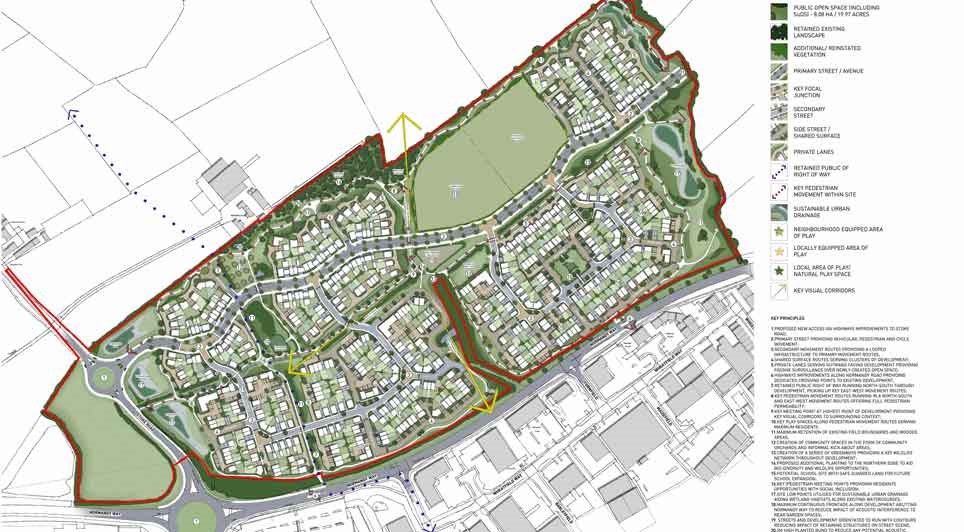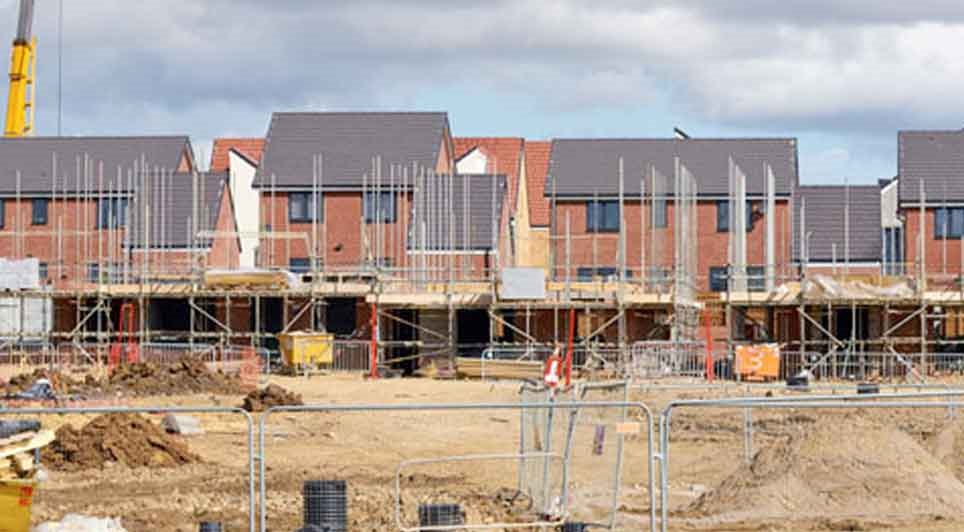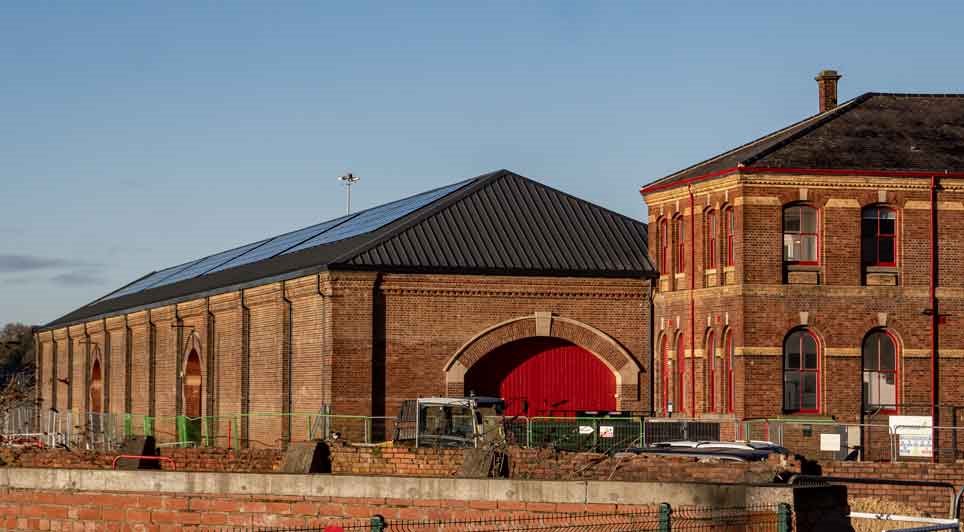Construction News
23/11/2009
Private Housing Rise Boosts New Builds
The latest Glenigan Index has been boosted by an improved flow of private housing projects starting on site in recent months.
The strength of the turnaround in the private housing sector, combined with increases in public sector and civil engineering work, limited the year-on-year fall in the Index for October to just 4% and has prompted an upward revision to the Index for August and September.
This is in marked contrast to the sharp falls in project starts seen during the first half of the year. Whilst private poor private sector activity, including a renewed weakening in private housing projects, is forecast to dampen construction starts near term, the flow of new work is forecast to improve during 2010.
The strengthening in public sector building and civil engineering projects has provided a particular boost to the construction industry in Scotland and Wales, while the East Midlands and the South West and the North West of England have particularly benefited from the rise in private housing schemes starting on site during the three months to October.
Whilst developers continue to prioritise completing and securing sales at existing sites, the increased flow of new project starts reflects housebuilders' growing confidence that market conditions will improve during 2010.
The steadier performance by the private housing sector, combined with continued strength in social housing starts as promised government funding has fed through, secured a 14% rise in the Residential Index for October.
The Non-residential Index for October was 18% down on a year ago as an increase in government funded work only partially compensated for the scarcity of private sector work.
The decline in commercial and industrial work is being driven by the weak rental and capital values and rising vacancy rates which continue to deter developers. The rise in public sector work during October has been led by an increase in health and community and amenity projects, while flow of education projects has weakened after the earlier surge work seen since the start of the current financial year.
The Civil Engineering Index during September was 13% up on a year ago. The value of underlying projects starts was boosted by a sharp rise in infrastructure work, while the flow of utilities projects remains firm, albeit slightly down on a strong corresponding period a year ago. Furthermore, the civil engineering sector is benefitting from several major schemes (schemes over £100 million are excluded from the Civil Engineering Index), such as the £6.3 billion M25 widening scheme, that have started on site during the summer and will continue to contribute to sector activity during 2010.
Near term, a weak private sector is expected to remain a drag on project starts, including a renewed weakening in private housing projects. However, the flow of private sector work is forecast to improve during 2010.
In contrast, the recent pick-up in public sector starts is set to lose momentum during the closing months of 2009, while government funding cuts will restrict the flow of public sector schemes over the medium term. Accordingly, whilst the Index is off recent lows, the value of underlying project starts is forecast to be weak for some time.
Weak household earnings and consumer confidence, combined with limited mortgage availability are expected to restrict the pace of recovery in new house sales or project starts during 2010. Nevertheless, housebuilders currently remain focussed upon securing sales at existing sites and reducing their work in progress, and the recent pick-up in project starts is encouraging. A gradual recovery in new residential projects is forecast over the course of 2010 as market conditions further improve.
High vacancy rates and falling rental levels continue to depress the office, industrial and retail sectors. In addition, after the encouraging pick-up in project starts, the flow of education and health projects schemes is forecast to falter over the coming months.
In contrast, a renewed strengthening in civil engineering project starts is expected during the remainder of 2009 as the sector benefits from new projects in the renewable energy sector and spending on both rail and road infrastructure.
Further information is available at: www.glenigan.com.
(KMcA/BMcC)
The strength of the turnaround in the private housing sector, combined with increases in public sector and civil engineering work, limited the year-on-year fall in the Index for October to just 4% and has prompted an upward revision to the Index for August and September.
This is in marked contrast to the sharp falls in project starts seen during the first half of the year. Whilst private poor private sector activity, including a renewed weakening in private housing projects, is forecast to dampen construction starts near term, the flow of new work is forecast to improve during 2010.
The strengthening in public sector building and civil engineering projects has provided a particular boost to the construction industry in Scotland and Wales, while the East Midlands and the South West and the North West of England have particularly benefited from the rise in private housing schemes starting on site during the three months to October.
Whilst developers continue to prioritise completing and securing sales at existing sites, the increased flow of new project starts reflects housebuilders' growing confidence that market conditions will improve during 2010.
The steadier performance by the private housing sector, combined with continued strength in social housing starts as promised government funding has fed through, secured a 14% rise in the Residential Index for October.
The Non-residential Index for October was 18% down on a year ago as an increase in government funded work only partially compensated for the scarcity of private sector work.
The decline in commercial and industrial work is being driven by the weak rental and capital values and rising vacancy rates which continue to deter developers. The rise in public sector work during October has been led by an increase in health and community and amenity projects, while flow of education projects has weakened after the earlier surge work seen since the start of the current financial year.
The Civil Engineering Index during September was 13% up on a year ago. The value of underlying projects starts was boosted by a sharp rise in infrastructure work, while the flow of utilities projects remains firm, albeit slightly down on a strong corresponding period a year ago. Furthermore, the civil engineering sector is benefitting from several major schemes (schemes over £100 million are excluded from the Civil Engineering Index), such as the £6.3 billion M25 widening scheme, that have started on site during the summer and will continue to contribute to sector activity during 2010.
Near term, a weak private sector is expected to remain a drag on project starts, including a renewed weakening in private housing projects. However, the flow of private sector work is forecast to improve during 2010.
In contrast, the recent pick-up in public sector starts is set to lose momentum during the closing months of 2009, while government funding cuts will restrict the flow of public sector schemes over the medium term. Accordingly, whilst the Index is off recent lows, the value of underlying project starts is forecast to be weak for some time.
Weak household earnings and consumer confidence, combined with limited mortgage availability are expected to restrict the pace of recovery in new house sales or project starts during 2010. Nevertheless, housebuilders currently remain focussed upon securing sales at existing sites and reducing their work in progress, and the recent pick-up in project starts is encouraging. A gradual recovery in new residential projects is forecast over the course of 2010 as market conditions further improve.
High vacancy rates and falling rental levels continue to depress the office, industrial and retail sectors. In addition, after the encouraging pick-up in project starts, the flow of education and health projects schemes is forecast to falter over the coming months.
In contrast, a renewed strengthening in civil engineering project starts is expected during the remainder of 2009 as the sector benefits from new projects in the renewable energy sector and spending on both rail and road infrastructure.
Further information is available at: www.glenigan.com.
(KMcA/BMcC)

05/02/2025
Stockport Mayoral Development Corporation (MDC) and ECF, a joint venture between Homes England, Legal & General, and Muse, have selected Vinci as the preferred contractor for Phase 1 of Stockport 8, a £350 million residential development west of Stockport town centre.
The decision follows a competi

05/02/2025
Vistry Group has finalised contracts for a significant housing development in Hinckley, Leicestershire, securing outline planning permission to deliver 475 new homes in the area.
The development, located east of Stoke Road and north of Normandy Way in the town's northern region, has a projected val

05/02/2025
Wilten Construction has been awarded a second Design and Build contract at Gateway 14 by client Gateway 14 Ltd and Jaynic.
The project involves the development of a state-of-the-art, three-storey Skills and Innovation Centre spanning 35,000 sq ft in the heart of Gateway 14. Designed to achieve BREE

05/02/2025
Knowsley Council has approved a major housing development in Kirkby, giving the green light to 800 new energy-efficient homes in the town's centre.
The decision also secures £7.7 million in Section 106 contributions from developer Barratt David Wilson Homes, further boosting local investment.
The

05/02/2025
Keepmoat Homes has announced plans to invest over £50 million in three new housing developments across Calderdale, aiming to deliver more than 200 new homes.
The developments, undertaken in partnership with Calderdale Council, form part of the North Halifax Transformation Programme, a local authori

05/02/2025
Essential renewal work at Skerne Road level crossing in Driffield has been completed. Over a six-day period, engineers replaced decades-old equipment, installing a state-of-the-art operating system, replacing the level crossing deck, and resurfacing the road.
The newly installed operating system is

05/02/2025
Construction firm GRAHAM is currently carrying out essential restoration work at the National Railway Museum in York, replacing the Grade II listed roof structure at Station Hall.
Originally built between 1875 and 1877 as a goods station, Station Hall now houses the museum’s six royal carriages.

05/02/2025
Mezzanine floors are commonly associated with additional storage or expanded floor space, but did you know they can also have a profound impact on employee productivity and morale? At Doity Engineering, we specialise in designing and installing mezzanine floors for

05/02/2025
Construction work is commencing on a new solar array at Weeton Barracks in Lancashire that will generate over one third of the site’s energy needs.
The work has been funded under the British Army’s Project Prometheus, a scheme that is increasing renewable energy across the army estate through inst

05/02/2025
The regeneration of Hartlepool's waterfront has reached a significant milestone with a £631,000 grant from The National Lottery Heritage Fund.
The funding will support the development phase of the 'Tides of Change' project, aimed at transforming the visitor experience at the Museum of Hartlepool a
 UK
UK Ireland
Ireland Scotland
Scotland London
London











